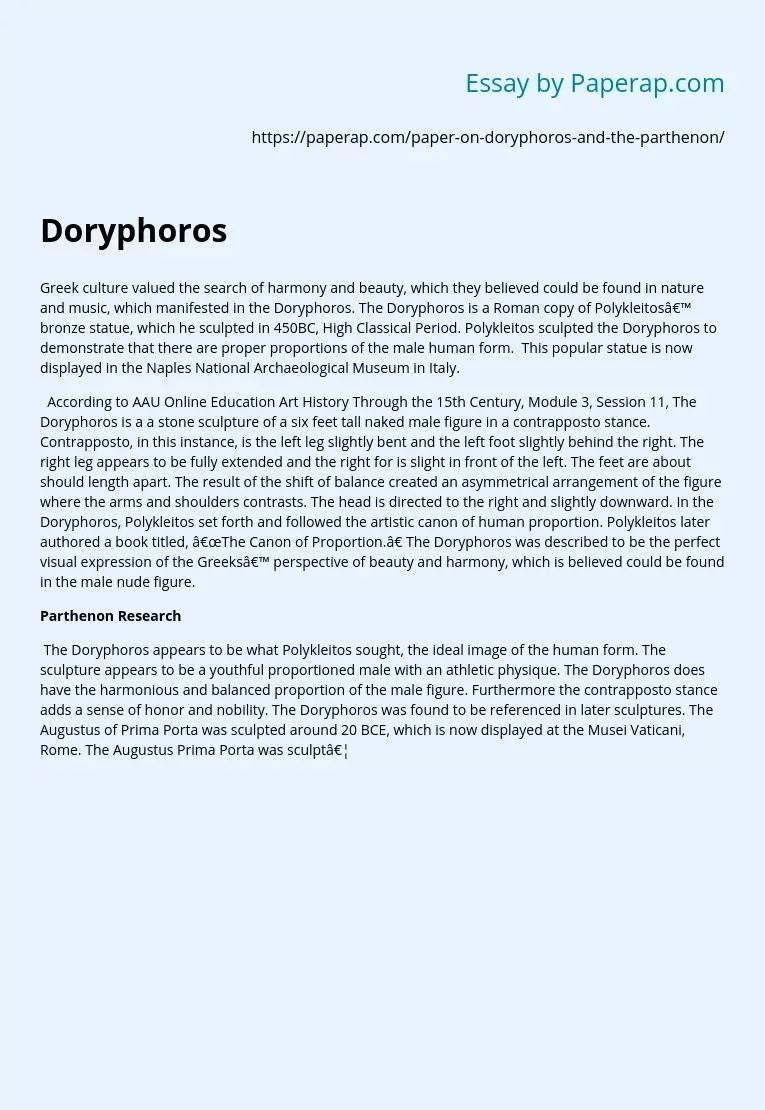Greek Culture and the Doryphoros.
Greek culture valued the search of harmony and beauty, which they believed could be found in nature and music, which manifested in the Doryphoros. The Doryphoros is a Roman copy of Polykleitos’ bronze statue, which he sculpted in 450BC, High Classical Period. Polykleitos sculpted the Doryphoros to demonstrate that there are proper proportions of the male human form. This popular statue is now displayed in the Naples National Archaeological Museum in Italy.
According to AAU Online Education Art History Through the 15th Century, Module 3, Session 11, The Doryphoros is a a stone sculpture of a six feet tall naked male figure in a contrapposto stance.
Contrapposto, in this instance, is the left leg slightly bent and the left foot slightly behind the right. The right leg appears to be fully extended and the right for is slight in front of the left. The feet are about should length apart. The result of the shift of balance created an asymmetrical arrangement of the figure where the arms and shoulders contrasts.
The head is directed to the right and slightly downward. In the Doryphoros, Polykleitos set forth and followed the artistic canon of human proportion. Polykleitos later authored a book titled, “The Canon of Proportion.” The Doryphoros was described to be the perfect visual expression of the Greeks’ perspective of beauty and harmony, which is believed could be found in the male nude figure.
Parthenon Research
The Doryphoros appears to be what Polykleitos sought, the ideal image of the human form.
The sculpture appears to be a youthful proportioned male with an athletic physique. The Doryphoros does have the harmonious and balanced proportion of the male figure. Furthermore the contrapposto stance adds a sense of honor and nobility. The Doryphoros was found to be referenced in later sculptures. The Augustus of Prima Porta was sculpted around 20 BCE, which is now displayed at the Musei Vaticani, Rome. The Augustus Prima Porta was sculpt…
Greek Culture and the Doryphoros.. (2019, Dec 05). Retrieved from https://paperap.com/paper-on-doryphoros-and-the-parthenon/

